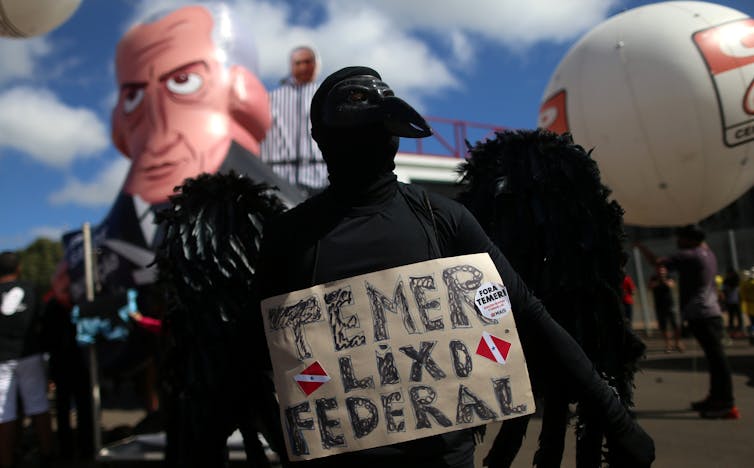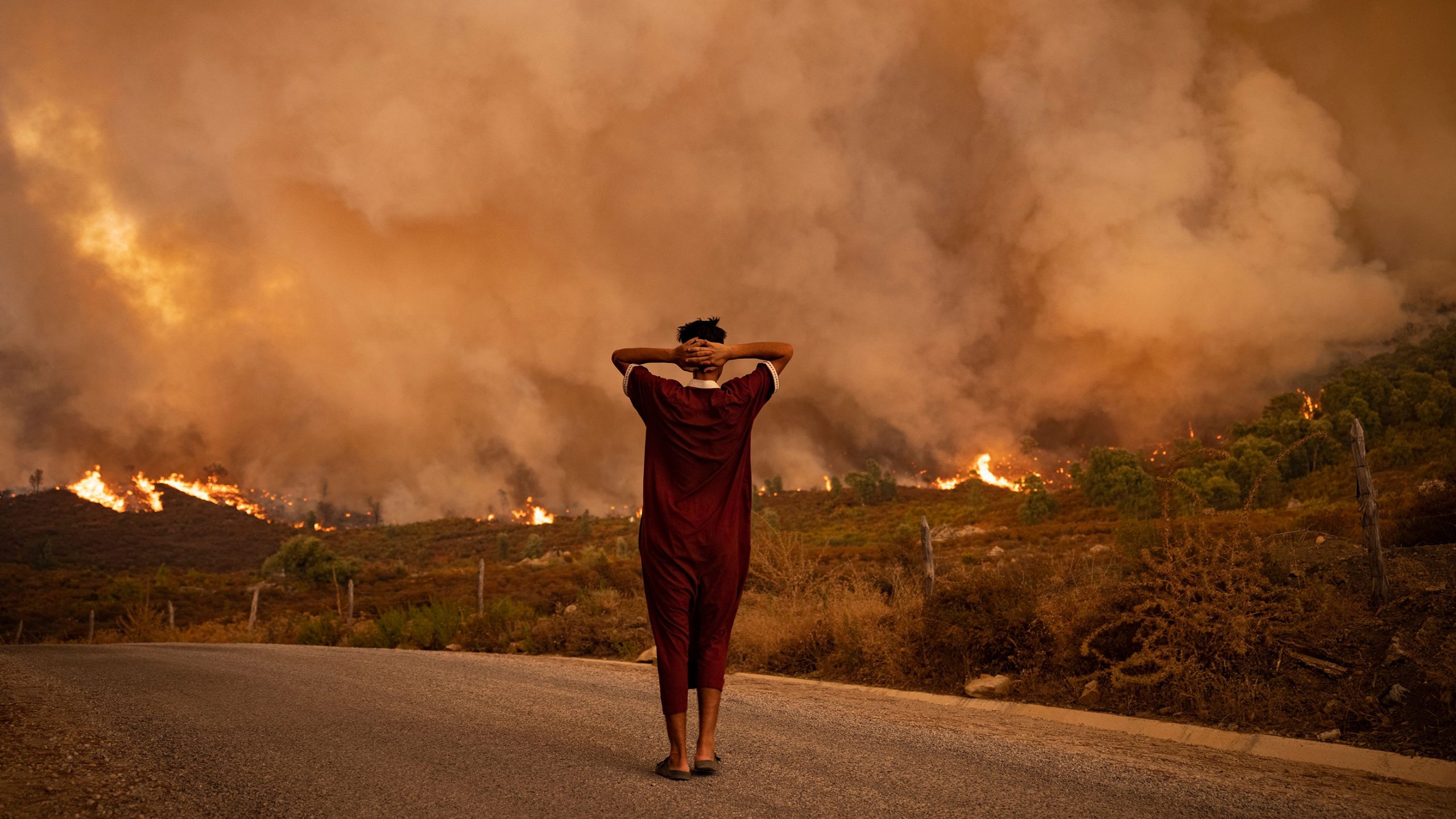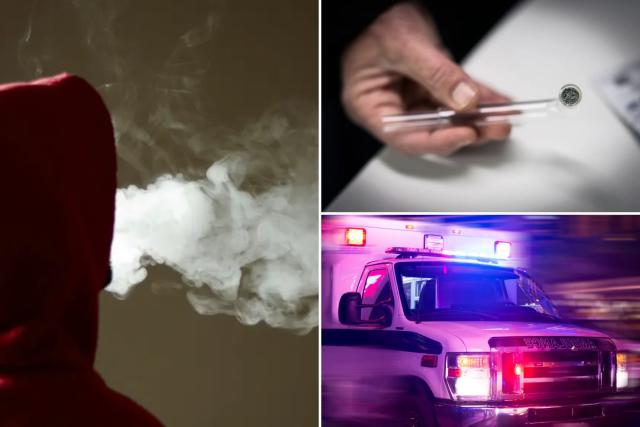Bad Romance
Bad Romance
The unbearable timidity of erotic fiction The Baffler
The Baffler o
r
d
F
a
c
t
o
r
y
At a private sex club, a couple enters: Hades, the shadowy head of the underworld, and Persephone, Zeus’s unwilling betrothed. Everyone’s heads turn. Is Hades going to fuck Zeus’s fiancée? It would be a declaration of war. Persephone brings her mouth to his ear and whispers, “Ruin me.” Hades obliges, ripping off her skirt and slipping his fingers into her.
This is par for the course in Katee Robert’s Neon Gods, a “scorchingly hot” reimagining of the Greek myth of Hades and Persephone. The demand for erotic fiction like this is booming. Sales are at their highest in over a decade, surging over 50 percent from 2021 to 2022. This upswing is partly a result of TikTok and its userbase of young, devout readers of the genre, who have driven romance novels back onto bestseller lists: sales of books that went viral on the platform surpassed 12 million by the middle of last year. As the market for romance flourishes, its subgenres have multiplied. Among the more popular is “dark romance,” which teases erotic threat and dominance/submission play not usually found in typical checkout-aisle paperback fare.
But does the promise bear out? Where do these books draw their sexual charge from? I know the characters are fucking, but how? What’s their bread and butter? What’s their source of escalation? Where won’t they go? Does Persephone have a safe word? It’s been twelve years since Fifty Shades of Grey hit shelves, a book that at least hints at wax play and fisting: has the ascendance of “dark romance” brought us somewhere new?
A simple question, perhaps, but one that requires dispatching with the superiority complex some critics possess toward romance fiction. I would never be so credulous, they seem to say; I would never allow my genitals to swell for such purple prose. Critics and journalists rarely deign to talk about erotica, but the astounding success of the Fifty Shades of Grey trilogy—which has sold more than 150 million copies worldwide to date—forced them to play ball. Most responded with either eye-rolling disdain for the trilogy’s female consumers and their show of overt sexuality, summed up in the common reference to it as “mommy porn,” or claims that the series cultivates dangerous desires.
We eroticize our core anxieties, and few anxieties touch us more deeply than being disempowered, even annihilated.
“Isn’t it dangerous to turn a BDSM-addict into a romantic hero?” Forbes wondered. “Would we want our daughters dating Christian Grey?” The far-right parachurch organization Focus on the Family contended that Fifty Shades’ popularity was a perversion of women’s natural desire to serve their husbands. Both perspectives rely on the idea that erotica readers, and women in general, are stupid, unable to disentangle fantasy from reality, and wouldn’t know a riding crop if it, well . . .
Even sympathetic pieces from content mills like BuzzFeed clung to a reductive idea that women can only like BDSM fantasies because they lose their minds over “a man who does everything his lover needs—and does it without being asked,” which is the dullest of all the possible reasons one might have a penchant for reading about nipple clamps, ball gags, etc. The women who read erotica were configured—and are still configured—as degenerates whose desires are somehow both cutely impotent and dangerously uncontrollable.
As a critic with an interest in the degenerate and uncontrollable, and also as a man whom most straight erotica deliberately finds unthinkable—based as it is in essentialist logics of “male” and “female” drives, of “alphas,” of men as impenetrable—I wanted to see how heterosexuality shapes and reveals itself through “dark romance” novels, which are fundamentally about submission. We eroticize our core anxieties, and few anxieties touch us more deeply than being disempowered, even annihilated. It is both reasonable and fascinating that some find a way to access pleasure and care through their own debasement, or fantasies about it. As an active desire, though, submission is drenched in shame: shame for men because it’s an affront to everything a man is supposed to be; shame for women because it supposedly confirms everything a woman is supposed to be. These books are caught, as we all are, between desire and shame. Dark romance seems to offer a way forward: here, perhaps, is a subgenre where desires for submission and pain can be explored and fulfilled, without being saturated in shame or punished with real-life violence.
It’s a shame, then, that the sex is often so dull—at least in the tranche of books I read as part of a casual survey of recent popular dark romance titles, including runaway bestselling series by Sarah J. Maas, Katee Robert, and Scarlett St. Clair. (All the books I picked turned out to be straight; the vast majority are.) This is what the sex scenes usually looked like: penis-in-vagina, mostly with women on their backs. Substantial emphasis on cunnilingus with intense clitoral focus. A turn to condomless penetration, invariably past the book’s halfway point and always with mention of the pill. Cagey around semen. Invocations of bondage and punishment, though little explicit depiction. Infrequent use of sex toys or instruments. No anal. Little pain. Some dirty talk, classic with a possessive tint. (You’re mine; come for me; harder.) One book, Twisted Hate by Ana Huang, depicts spanking and deepthroating, as well as the use of vibrators, including one ambiguous mention of an anal toy—a rarity. Each book tends to have a couple of defining kinks: if you were wondering whether faerie men’s wings are an erogenous zone, for instance, Maas is only too happy to elaborate.
Audiences seem to prefer this: erotica that offers something more titillating than your everyday sex but that doesn’t throw you into a completely alien landscape. Accordingly, this kind of straight erotica is skilled atimplying anything-goes carnality, while keeping the sex itself relatively tame. Cursory mentions of bisexuality, for instance, can create a frisson of inviting sexual openness; but a bisexual with an expanded, gay-coded sexual repertoire would be a bit much. The men of these books have, of course, had unimaginably depraved sex—somewhere else. Sometimes fantasies are tossed into the air, juiced of their erotic potential, and then squashed, as in this conversation between Hades and Persephone in Neon Gods:
“What if I want to share? What if I pull your panties to the side and let whoever is interested come over here and fuck you against my chest?”
My entire body clenches, but I’m too dazed to decide if it’s in protest or desire.
“You’d do that?”
[. . .]
“No, little Persephone. Sharing isn’t my kink. I’ll be the only one touching you.”
This works well: we get the powerful erotic image of Persephone getting “shared” without breaking the monogamist proclivities of the text. Hades isn’t interested; he just brought it up to titillate Persephone, to test her loyalty. If Persephone is interested, we don’t get to see. (Many of the books I read are explicitly or implicitly based on the Persephone myth because Persephone is Schrodinger’s kidnap victim: if the reader finds it hot that she’s the hostage of a dominating Hades, then she is, and if they don’t, then she isn’t.) Dark romance has a veneer of abandon, but the sex is controlled, anxiously so. Nobody is getting thrown or pushed. The punishments tap out after half-hearted orgasm denials. All parties are quite comfortable, thank you.
But I was wrong in my original assumption that the main allure of dark romance novels is actually the sex. The mainstreaming of these books—their publication with big presses and popularity with wider audiences—necessitates a certain level of caginess around their marriage of carnality and “darkness.” There is much sexual discomfort, danger, and violence to be found in these books, and they are a huge part of the books’ erotic charge, but they are contained in scenes that can be disavowed as sexual at all.
Sarah J. Maas’s 2015 New York Timesbestselling novel A Court of Thorns and Roses is one of the books that birthed dark romance. Eight years after its publication, it’s still ubiquitous on TikTok and is being adapted into a TV series for Hulu. It follows a teenage human girl, Feyre, who accidentally kills a powerful magical being called a Fae and is imprisoned, only to become enmeshed in a love triangle with two Fae lords. It is not all that sexually graphic and is generally marketed to young adults. It is also, under even the most conservative definitions, an extreme sexual fantasy novel about rape, torture, and enslavement.
These stories promise violence, dominance, and coercion, but as soon as they become explicitly coded as romance, all that stuff gets memory-holed.
For instance: there is a scene in which Feyre’s arm is broken, and Rhysand, who will become her endgame love interest, sneaks into her cell. He offers her healing in exchange for spending two weeks a month with him. She refuses. He responds by grabbing the exposed bone in her arm and twisting it. Under extreme duress, she agrees to a week; in turn, he heals her, nonconsensually branding her with tattoos in the process. This is both a graphic assault and a form of extreme dominance/submission play. The scene relies on both interpretations: Feyre is Rhysand’s toy, and he luxuriates in her pain and disempowerment. The violence is disturbing, and it serves to bolster a sexual dynamic between two people who are attracted to each other. It is an undeniably sexual scene. But sexualised desire for this assault, to see it and vicariously experience doing it or having it done to you, is not a desire the book can own, or can even code as sexual. It is too extreme for a YA fanbase.
The book and its numerous sequels enact and then disavow this kind of sexualized violence, over and over again. Hundreds of pages later—after their romantic tension has built considerably—Feyre says that if Rhysand had originally asked to spend every week in the month with her, she would have said yes. That could be a line from a horror novel about a drugged woman being psychologically broken and her memory destroyed by her assaulter. A hot horror novel, for sure; getting kidnapped and tortured has the makings of a powerful sexual fantasy. But it is a different, much sourer kind of horror for the novel to instead subsume this kind of violence within the power of courtship and marriage, like shovelling pills into food. The book repeatedly offers its readers points of access into dark, titillating desires, then promises safety by sublimating those desires into heterosexual romance and making us forget the original transgression. What does that tell us about heterosexual romance?
What Rhysand does to Feyre comes off as necessary to the plot, or not as bad as what the other guy did. In the subsequent novel in the series, A Court of Silver Flames, she is impregnated with a child she technically cannot birth without it killing her, but the marital horror that threatens to break into the narrative is, of course, defused at the last minute. (Her sister bargains with a magical power to change Feyre’s body to a shape that can birth Rhysand’s children.) They live happily ever after, or something like it. Going back through the series, this frustrating withdrawal shone through all of them: the paternalistic internal censor that clamps down on unpalatable desire, explaining away every violent act. It’s okay, that guy didn’t kidnap her, not really: it was for her own good! He was saving her! He didn’t want to do it! They are in love now, and all is forgiven.
Dark romance brings dominance/submission fantasies and abuse fantasies into the public eye—but most of the books published thus far under the moniker are noticeably uncomfortable with such “unsafe” desires. These stories promise violence, dominance, and coercion, but as soon as they become explicitly coded as romance, all that stuff gets memory-holed; violence and assault in dark romance are redeemed by fairy tale love. But fairy tales are horrific, violent things, and so, too, is straight romance, a structure that is historically built on abuse, gendered coercion, and women’s status as property. (Where I live, in the United Kingdom, marital rape was legal until only thirty-two years ago.) A book like A Court of Thorns and Roses would be so different if normative romance and marriage were considered the horror shows that they are. But they aren’t.
Dark romance novels don’t fear abusive men—if they did, the books would be wiped clean of their assault scenes. Their ultimate fear is of non-normative desire. The genre’s source of popularity is its evocation and its repression of these “unnatural” desires, its promise that you can like these things and still be “normal”—if, that is, you accept that your desires were just a phase, a prelude to romance. That is what enables the mainstream success of these titles. But this is also a move that disempowers women, naturalizes abuse, and continues the false belief that complex sexual desires are only harbored by harmful and irredeemably aberrant people. No form of sexuality can be stripped of the desire to bleed, to hurt, to transgress, to dissolve, to change. If admitting that would break straight romance, then break it.
(责任编辑:时尚)
- ·Write Your Book
- ·Microsoft to launch its new AI chip 'Athena' next month
- ·The Talking Cure
- ·Scientists teach robots to navigate through vegetation
- ·French Police Seize 72 Guns From Film Star's Home
- ·Two American Airlines Caught Fire Due To Bird Hits
- ·Tolerance and humanitarianism will not solve Europe’s ‘migration crisis’
- ·Ohio Teen Dies After Participating In TikTok Challenge
- ·Fresh Hell
- ·Israel, where prostitution is legal, debates criminalising the men who pay for sex
- ·Botanists Identify New Carnivorous Plant
- ·A Bleak Future for Water
- ·Spain rocket launch could be turning point for European spaceflight
- ·Reinforcement learning: AI beats pro Street Fighter players
- ·Daniel Schorr Dies
- ·Can China's Xuntian surpass the Hubble telescope?
- ·Twitter Blue Tick Restored For High Profile Accounts
- ·Is this the end of slum upgrading in Brazil?
- ·Queering the Courts
- ·Burning Down the Bordertown














